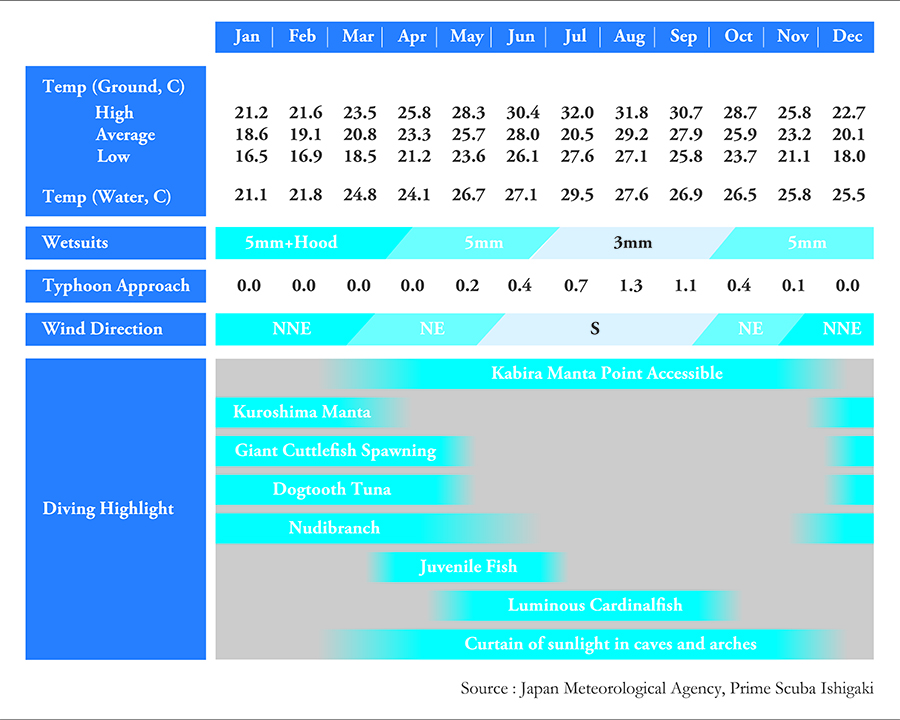

Diving all year round
Diving is available all year round in Ishigaki. Summer is unequivocally gorgeous, whereas spring and autumn are perfect for those who would rather avoid the summer crowd, but still want to enjoy a tropical vacation. Although not typical tropical diving, winter would be great for diving freaks who are looking for super clear blue water and a spacious luxury dive cruise.
Winter (January-February)
Ishigaki winter is never cold – its low of 18C (64F) is as far as it goes on the ground, and there are some days above 23C (73F). Although sunny days don’t usually last, breathtakingly clear blue water with visibility of over 30m is never unusual. The water temperature will be around 22C (71F), and 5mm wetsuit with a hood vest would be just fine.
Due to the seasonal north wind, winter dive points will mainly be around the south side of the Ishigaki and Yaeyama islands. Although the most popular manta points around the Kabira area are generally not accessible, mantas are often sited around the Kuroshima area, feeding on plankton. Big fish such as Dogtooth tuna is regularly seen during the period, and it is the peak season for the nudibranch.
Since this is the off-season, the boat is usually not crowded, and you can enjoy the luxury of diving as if you were on a charter cruise.


Spring (March-May)
In Ishigaki Island, the beaches opens in mid-March. The hot summer is just around the corner – the sunshine is getting stronger this time of year, and sunburn is becoming a concern. Hot days can be close to 30 degrees Celsius, but the water temperature has not risen that much yet, so even though it is hot on the boat, it is generally cool and comfortable in the water.
The wind will start to blow from the south, and diving becomes available at all the areas of Ishigaki and surrounding islands, including Kabira manta points.
The rainy season starts from the beginning of May, but the sea condition is generally calm during the period and perfect for diving.
Summer (June-September)
Once the rainy season is over around the end of June, the real summer starts in Ishigaki.
Immediately after the end of the rainy season, a relatively strong, humid wind called a kachibai (seasonal south wind) blows, and typhoons are also a concern during the summer months. Many typhoons will be born around Micronesia, and the number of typhoons that approach Ishigaki is usually around 2-3 every year. When the port closes due to the approach of the typhoon, it usually takes around 3-4 days to re-open.
The complex geography of Ishigaki and surrounding islands almost always provides us with some dive points shielded from wind, and diving is usually available as far as the port remains open.


Autumn (October-December)
The seasonal north wind starts to bring some dry air to the island, and the scorching hot weather of summer will be over. The boat deck will no longer be burning hot, and a nap after lunch under gorgeous sunshine and a nice breeze will be hard to resist.
At Kabira manta point, there are days with a number of mantas, and siting of over a dozen at the same time has been reported a number of times during autumn.







